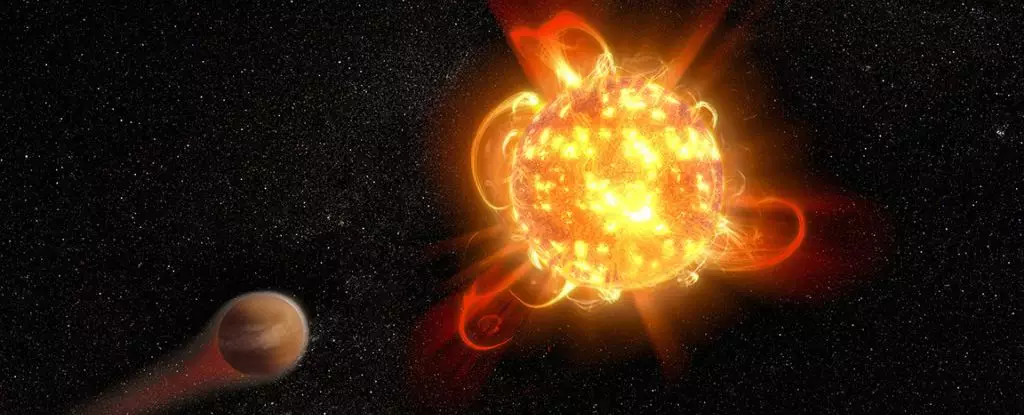When we speak of stars, the term “M-class” or red dwarfs often brings up images of cool, stable celestial bodies that hold promise for potential life beyond Earth. These stars are indeed cooler and smaller than our own Sun, with a mass and surface area that are significantly lower. Due to their low temperatures, red dwarfs are known to burn fuel more slowly than larger stars, allowing them to shine for billions of years—far longer than the lifespan of our Sun. This characteristic alone makes them fascinating subjects for astrophysical studies, particularly in our quest to identify exoplanets that may harbor life.
Interestingly, it is estimated that around 70% of the stars populating the Milky Way are red dwarfs. Their abundance plays an essential role in the search for extraterrestrial life, as these stars are often accompanied by rocky planets that may reside within a habitable zone—a zone that could allow the presence of liquid water. The combination of longevity, stability, and the potential for habitable planets make M-class stars seem like ideal candidates in the cosmic search for life.
However, it’s imperative to address a significant concern that complicates the narrative surrounding the habitability of planets orbiting these stars: the frequency and intensity of stellar flares produced by red dwarfs. Recent research reveals that red dwarfs, despite their seemingly calm nature, can unleash an astonishing number of powerful stellar flares that could drastically alter the habitability conditions on orbiting planets.
A newly published study has unveiled shocking insights derived from over a decade of observations using the now-retired GALEX space telescope. Researchers examined data from approximately 300,000 stars and focused specifically on 182 stellar flares associated with M-class systems. Unlike traditional studies that predominantly analyze visible light emissions, this research dives deeper into ultraviolet (UV) radiation—a more nuanced aspect of stellar activity that could hold clues to planetary habitability.
Ultraviolet radiation emitted during stellar flares presents a complex dilemma for potential life forms on orbiting planets. On one hand, moderate levels of UV radiation can facilitate the creation of complex organic molecules, vital ingredients for life as we know it. Conversely, excessive doses of UV radiation can be absolutely detrimental, capable of stripping away a planet’s atmosphere and depleting crucial protective layers like ozone. This dual nature of UV radiation raises pertinent questions about the sustainability of life on planets orbiting red dwarfs.
The research findings indicate a worrying trend: previous studies have likely underestimated the amounts of UV radiation produced during stellar flares. By employing a new model that deviates from traditional blackbody distributions, researchers discovered that nearly 98% of the observed flares had UV outputs that exceeded anticipated measurements. This deviation from conventional expectations indicates that prevailing theories about stellar activity may not accurately represent the realities of red dwarf systems.
The implications of this research are profound. If red dwarfs generate higher levels of UV radiation than previously acknowledged, orbiting planets could face a more hostile environment than scientists have been led to believe. While certain planets may meet criteria commonly regarded as indicators of habitability—such as suitable surface temperatures—they could still be rendered uninhabitable due to the damaging effects of strong UV radiation emitted during stellar flares.
While red dwarfs offer intriguing possibilities for extraterrestrial life, emerging research emphasizes the need for a cautious approach in studying these systems. Understanding the complexities inherent in the relationship between stellar activity and planetary habitability will be crucial as we continue to explore the universe’s many hidden corners. The quest for understanding life beyond Earth remains a vital and ongoing endeavor, requiring continuous scrutiny and an appreciation for the many factors at play within the cosmos.


Leave a Reply